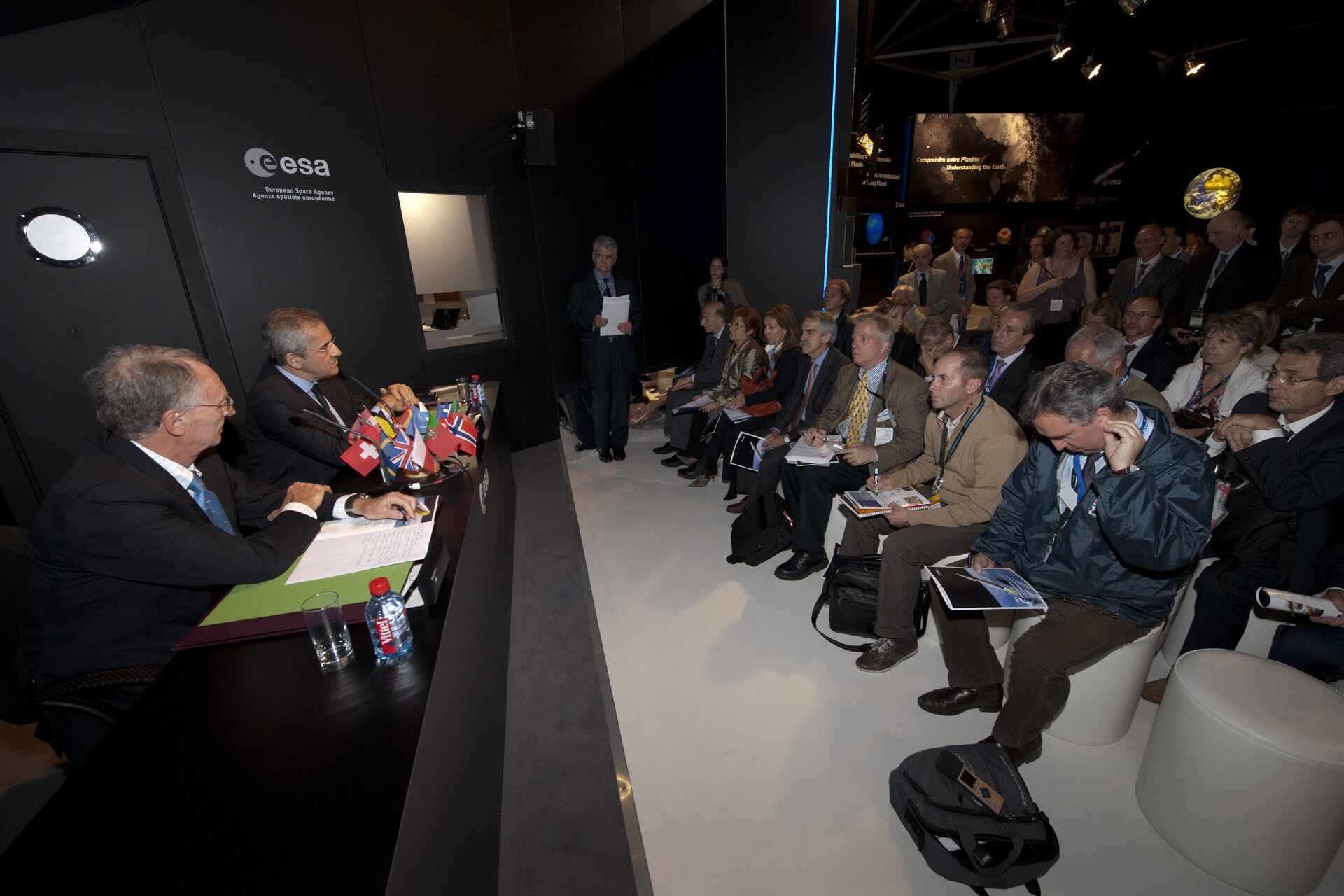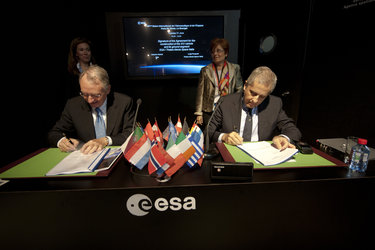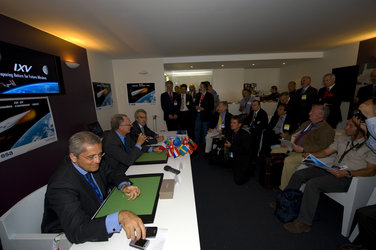

Signature of agreement to build IXV
Thank you for liking
You have already liked this page, you can only like it once!
Antonio Fabrizi, ESA Director of Launchers and Luigi Pasquali, President and CEO of Thales Alenia Space Italia.
On 21 June 2011 ESA and Thales Alenia Space Italia announced an agreement at the Paris Air Show to begin building the IXV Intermediate eXperimental Vehicle for its mission into space in 2013.
Europe’s ambition for a spacecraft to return autonomously from low orbit is a cornerstone for a wide range of space applications, including space transportation, exploration and robotic servicing of space infrastructure.
This goal will be achieved with IXV.
Launched into a suborbital trajectory on ESA’s small Vega rocket from Europe’s Spaceport in French Guiana, IXV will return to Earth as if from a low-orbit mission, to test and qualify new European critical reentry technologies such as advanced ceramic and ablative thermal protection.
-
CREDIT
ESA - S. Corvaja, 2011 -
LICENCE
ESA Standard Licence

Signature of agreement to build IXV

Signature of agreement to build IXV

Signature of the IXV contract between ESA/Thales Ale…

Signature of the IXV contract between ESA/Thales Ale…

